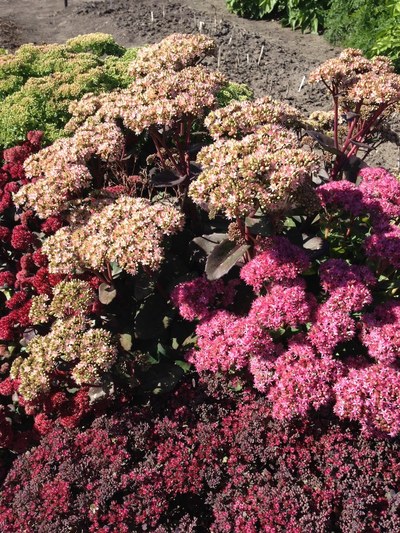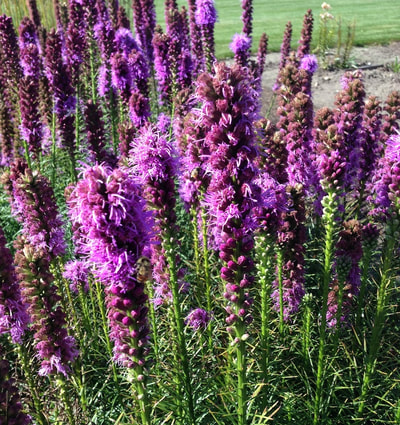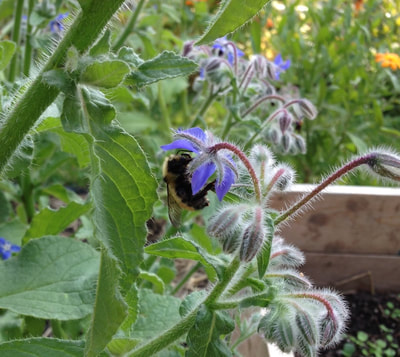So what are the plants still in bloom at this time of year? I had the opportunity to visit a rural property near Spruce Grove, as part of an orchard tour day. The gracious host spoiled us with delicious strawberries and sour cherries and provided lots of great information about her numerous fruit trees and berry bushes. I noticed how many plants were still blooming and were just covered in bumble bees and honey bees.
|
End of August is a time when our yards show signs of winding down - many flowers have gone to seed and some leaves are turning yellow. In an edible landscape, it’s also a glorious time for harvest. The bees and other insects have done a wonderful job pollinating flowers, and we are now reaping the benefits. Let’s not forget that they must continue to forage for pollen and nectar. Having flowering plants until frost is beautiful and provides food for insects such as bumble bees that need enough fuel to overwinter. So what are the plants still in bloom at this time of year? I had the opportunity to visit a rural property near Spruce Grove, as part of an orchard tour day. The gracious host spoiled us with delicious strawberries and sour cherries and provided lots of great information about her numerous fruit trees and berry bushes. I noticed how many plants were still blooming and were just covered in bumble bees and honey bees. There was a large clump of several varieties of Sedums, and large group of purple Liatris that looked stunning and full of buzzing bees. Another lovely combination was a large clump of Russian Sage behind a dark purple barberry. Even some self-seeded California poppies in front of a pink flowering potentilla looked great and had some winged visitors. Lots of good topsoil and ample water is the secret to success in this yard, but even in drier locations we can have late flowering Blanketflowers (Gaillardia) and stunning Coneflowers (Rudbeckia). In my own yard, I still have some Borage in bloom that came up a bit later. Because it self-seeds, you may find it a bit crazy, popping up in the middle of your veggie beds – don't be shy about yanking it out and composting it, ideally before it has set seed. Another later bloomer is Garden Hyssop (Hyssopus officinalis); it is a larger clump and slightly later blooming than the native Anise Hyssop (Agastache foeniculum), especially in part shade. Annuals such as Sunflowers, Calendula, Cosmos and climbing Scarlet Runner Beans are also providing lovely colour and food for pollinators.
|
AuthorClaudia is exploring and sharing permaculture ideas in Edmonton. Categories
All
Archives
March 2022
|






 RSS Feed
RSS Feed